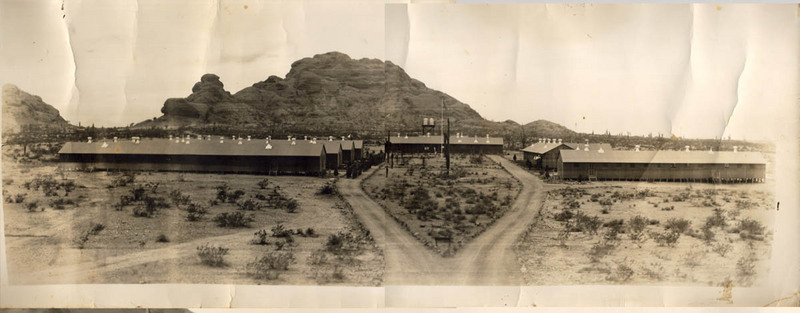Originally designed to be a combat training camp, Papago Park Camp was turned into a POW camp during the duration of World War II for Italian and German prisoners before becoming what it is today.
America entered World War II after the attack on Pearl Harbor on December 7, 1941. Civilians across the country proudly signed up to serve their country. Parts of Papago Park were leased to the federal government in 1941 to build a desert combat training camp. The military came in and built barracks and a facility, but the training would only last until 1942 when the War Department took all of Papago Park except for the Desert Botanical Garden and Hunt Bass Hatchery to build a POW camp. Papago Park transformed into Papago Park POW Camp or Camp Papago Park.
The camp’s first visitors arrived in 1943 from halfway around the world. They were Italian captives, but soon the camp would be primarily dedicated to housing Nazis. This was apart of a larger system across the U.S. that brought POWs to American soil to prevent prisoners from escaping and to keep them as far away as possible from the battlefield.
Camp Papago Park did not do a great job of preventing escape. In 1944 25 Nazi POWs made an escape by tunneling underground for over 200 yards. This was known as the Great Papago Escape and it was the largest POW escape from an American facility during the war. The escape is not unlike the famous camp breakout that inspired the classic movie The Great Escape. Unfortunately, this escape was not led by Steve McQueen, but by Nazi war prisoners on American soil. Luckily for Americans, the desert proved to be enough of a prison itself because all the escapees were eventually recaptured simply because they found themselves in the middle of the desert with no food or water and no place to go.
The POW camp would last until the end of the war, but the military did not leave Papago Park until much later. A section of the park was used for a veterans’ hospital until 1953 and then more land was sold off to the public in 1955. The end of the war era meant the beginning of a new era for Papago Park


